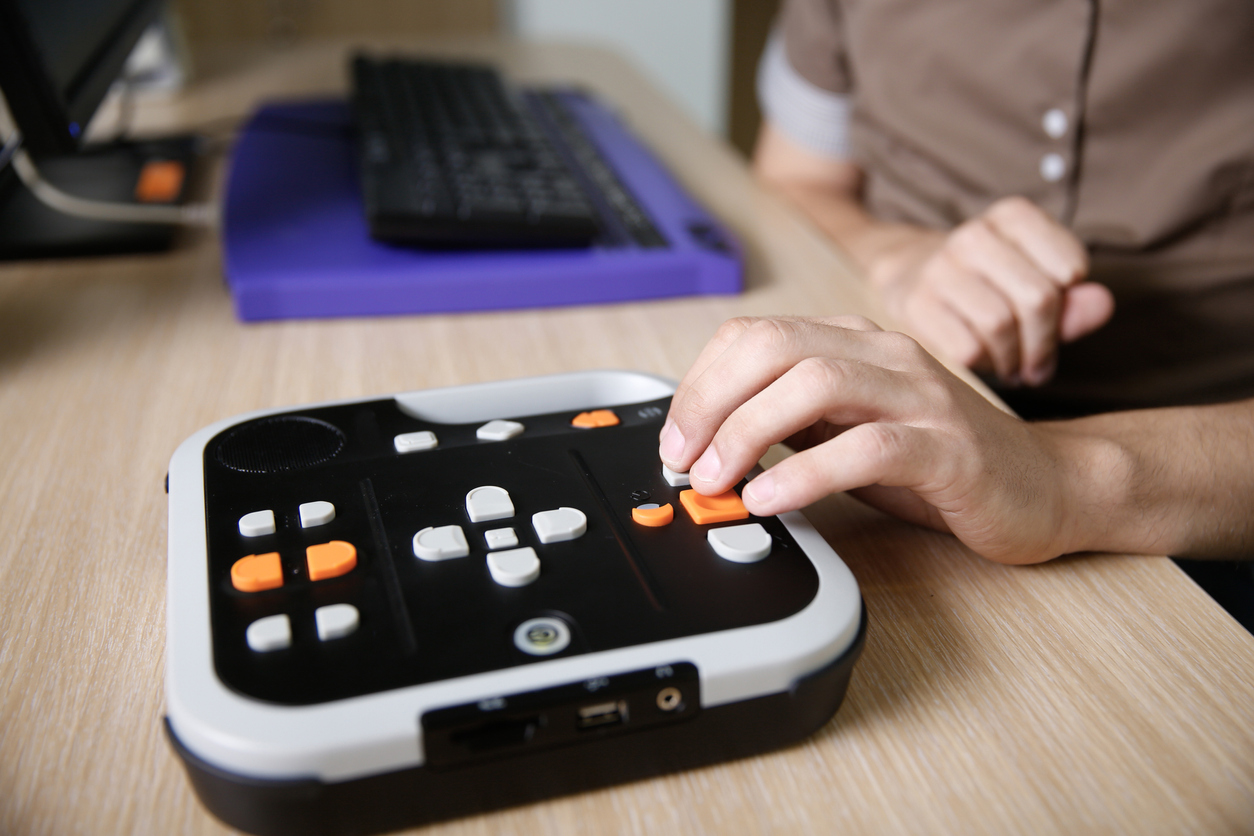One day, I was sitting at my computer listening to my coworkers as they busily edited a survey on Qualtrics. Because I’m totally blind, I was using a screen reader, which reads the screen out loud to me, and I was using keyboard commands instead of the mouse. I pressed all the keyboard commands I knew, but they didn’t work the way they were supposed to. I knew what edits I wanted to make, but I couldn’t do it with the screen reader. So, I sat and watched as my coworkers completed the project, wishing I could contribute equally.
Why was this experience so difficult? The answer is accessibility, which means that the environment (such as a software environment) is designed to be used by people with disabilities. Qualtrics is just one example of a program that is not accessible to my screen reader. What else is not accessible? IBM-SPSS, which is a leading data analytics tool (and the sole tool we were taught in grad school). So, I was challenged throughout my statistics education. Also, most APA style articles published in leading journals are inaccessible, meaning that I require another person to read to me when I’m accessing literature. At one point, I was unable to do the job for which I was hired because they used a file management software called Mendeley, completely inaccessible to my screen reader. Imagine how frustrating it is to convince employers I’m capable when the software isn’t designed with blind people in mind.
The Americans with Disabilities Act (ADA) of 1990 requires reasonable accommodations for people with disabilities to do their jobs. Pronto Accessibility reports that a study conducted by WebAIM showed a whopping 98.1% of websites were found to be non-compliant with the Web Content Accessibility Guidelines (WCAG), a set of voluntary measures to make websites accessible. This was actually worse than the previous year, where only 97.8% were inaccessible. Worse, the problems in this study were limited to those that could be detected automatically by WAVE, which only picks up 25 to 35% of problems, according to Pronto Accessibility. So the total number of problems is likely much higher.
That means that statistically speaking, your company website may not work for people with disabilities. World Bank Group estimates that 15% of the global population has one or more disabilities. You might be losing out on as many as 15% of your potential customers because they can’t access your website. You may be missing out on 15% of your talent pool because they can’t fill out your job application or perform their role responsibilities on your website.
What Can You Do About It?
Automated Error Detectors
For a temporary solution, you can use automated error detectors like the Wave Web Accessibility Evaluation Tool. But that only catches 25 to 35% of errors.
Personalized Accessibility Consulting
You could invest in personalized accessibility consulting, offered by companies like Freedom Scientific.
Hire Experts with Disabilities
You could hire experts with disabilities to oversee your software at all stages of the life cycle, from design to testing and through production and technical support for end-users. Instead of paying the price of time and money to add accessibility features to your already-in-production software after the fact, you could save money and time by building accessibility from the ground up.
Make Accessibility Part of Your Company Culture
What if your company doesn’t see accessibility as an extra feature but instead sees it as a must-have? What if the software can’t hit production until it’s accessible? What if an update can’t be rolled out until it’s accessible? What if your customers with disabilities are valued just as highly as your other customers? Then your company would be singled out from all your competitors as the one that’s doing the right thing, that truly embodies its commitment to diversity, equity, inclusion, and accessibility (DEIA). Google is one company that’s done a great job for me.
One day, I was sitting at my computer, using Google Forms to create a survey about cultural competence. When I wanted to add a question, I held down the Control, Shift and Enter keys at the same time. If I wanted to change my question from multiple choice to short answer, I pressed the Down Arrow key until my screen reader said “short answer” and then pressed the space bar to check the box. When I was ready to send my survey, I pressed Control and Enter at the same time (without the shift), pressed the Control and V keys at the same time to paste the email addresses, pressed the Tab key until my screen reader said “Send” and then pressed Enter. It worked! At that moment, I was truly appreciative of Google’s commitment to accessibility because they leveled the playing field by allowing me to do the work of which I’m truly capable. So if you take Google’s example and make your products work for people like me, I would like to come work for people like you!
Amy Albin is an I/O Psychology graduate student and gothamCulture intern.
References
Verma, S. (2021, June 28). 98% of Top Websites are Not WCAG Compliant, Why? Pronto Accessibility. Retrieved May 12, 2022, from https://www.prontoaccessibility.com/post/98-percent-of-top-websites-are-not-wcag-compliant-why
World Bank IBRD-IDA. (2022, April 14). Disability Inclusion. Retrieved May 12, 2022, from https://www.worldbank.org/en/topic/disability#1

